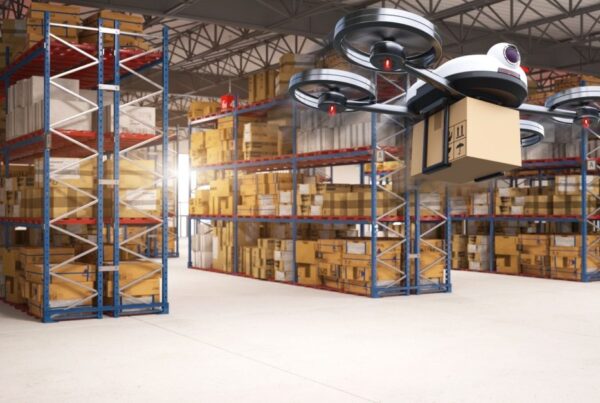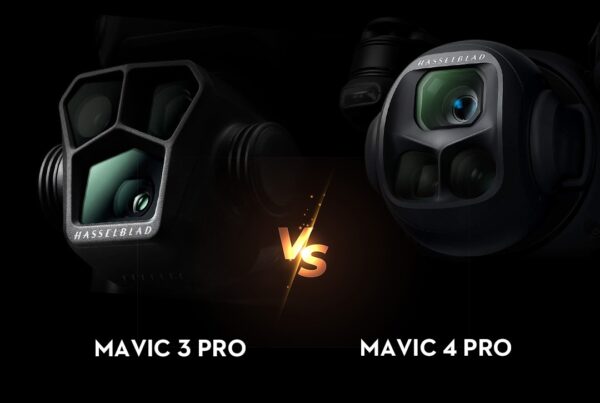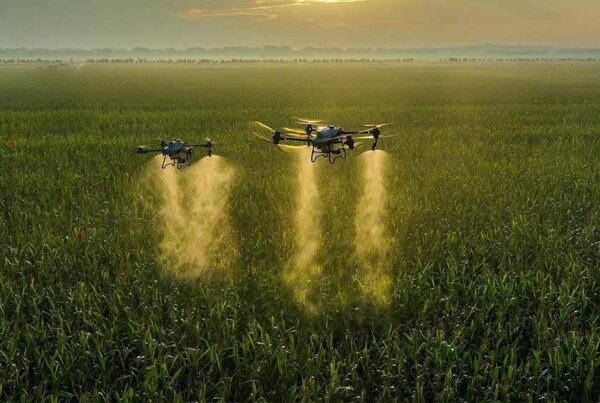
How To Use Drones In Agriculture And Best Agricultural Drones Practices
Agriculture in this modern era is changing rapidly. According to the Food and Agriculture Organization (FAQ), the world’s population is expected to reach 9.1 billion by 2050 and feed this population; food production should be increased by at least 60% or 70%. The traditional methods of farming and lack of farm labour availability are making agriculture economically tricky and inefficient.
The sector is needed to increase agricultural productivity; rising technological advancement in agriculture and decreasing labour leads to the implementation of automated technology in agriculture. Drones in agriculture are a positive trend.
Drones in agriculture can ignite a significant change in improving agriculture’s efficiency due to the shortage of skilled human resources and other heavy machines and tools. Further, they can enhance plantations with crop rotation strategies and offer necessary inputs related to the daily progress of the crop. These drones are used for soil and crop monitoring, field analysis, crop field mapping, saving water, crop spraying, livestock monitoring, crop health assessment, and much more. These drones are affordable and economical to manage farming, which helps to achieve challenging tasks while saving the crop field cost. For example, If we use agriculture drones, we can spray 40-60% faster than manual spraying and save 30-50% in chemicals. Also, drones can save up to 90% of water usage for agriculture.
In this article, we will explore the solution of using drones in agriculture. Read to learn more!
The Reason of use Agriculture Drones
So, what can drones do for agriculture? The answer to this query boils down to increasing overall efficiency, but there’s more to drones than just that. As drones become an integral part of innovative farming, they help farmers deal with a wide range of challenges and several benefits. The use of drone technology can genuinely become a game-changer. By gaining access to a massive pool of knowledge, farmers can increase crop yields, save time, reduce expenses, and act with unparalleled accuracy and precision. Using a drone, farmers can help both farm productivity and profitability based on actual field information, thus protecting the environment, a turning point to success.
What are Agricultural Drones?
Agricultural Drones, commonly known as Unmanned aerial vehicles (UAV), small aerial platforms that weigh up to 20 kg /50 lbs. Because of their size, they can’t operate by the human body yet. We can use Agricultural Drones in two ways; first, humans have complete control of the vehicle by wireless remote; autonomously, or second the Drone can control itself and follow a route based on GPS or other sensors. There are many different kinds of crewless aerial vehicles and can be categorized into the following groups:
Fixed-wing
It controls the vehicle and has a non-movable wing and a propeller that facilitates forward movement. Its creation must always be moving relative to the air around it to stay over the air. Hence, its operation can be significantly affected by the wind.
Rotary wing
It’s well known by a farmer and looks like a small helicopter since it’s multiple rotors. Due to its rotary system, the Drone can hover and can be vertically deployed and retrieved. The rotary-wing Drone has some advantages over the other types; it is easy and small, transportable.
Tethered vehicle
It’s a drone tethered to a wire to eliminate the need for a remote controller. Drone movement is therefore confined according to the rope. Moreover, tethered drones have many different variations. They can range from a typical drone move consistent with a drone tethered with a microfilament wire with an installed power grid for unlimited flight.
How Agricultural drone technology works?
To better understand the use of agricultural drones, let’s take a deep look at drone technology. Typically, drones created include propulsion and GPS, equipment for automated flights, sensors and cameras, navigation systems, and programmable controllers.
The technology used for UAV drones for agriculture is made in a way that permits them to capture more accurate information than airplanes and satellites are capable of collecting. Agricultural Drone-based software it’s a method to collect data and deliver it in an easy-to-read form.
The data collection of agriculture drones includes three steps:
Information outcome
After the data has been processed, it is sent to farmers in a readable format. The report contains knowing information that accounts for much better farm management decisions.
Autonomous flights
A UAV drone carries out a flight pattern consistent with the pre-established parameters and collects the specified data.
Data
The Drone submits the information it has captured for processing and study.
Best Agricultural Drones practices
Also, the use of agriculture drones for precision is gaining mass in motion due to their ability to deliver the foremost up-to-date information quickly & efficiently, and its overall affordability also accounts for the increased application of drones.
Agriculture drone spraying monition
Most smart farms use drones for agriculture spraying, which helps to reduce human sources, and it helps with fertilizers and pesticides. Drones can handle this task faster and more efficiently than vehicles and airplanes; they’re also a superb alternative for farms that also use manual labour.
Drones also are irreplaceable when it involves spotting treatment. The significant advantage of drones is that they find infected areas with sensors.
Crop surveillance
Agricultural fields hold large areas, and it’s often impossible to estimate the general state of crops. Drones are also useful for mapping; farmers can stay updated on the health of plants during a particular area and indicate which field areas require attention.
Drones inspect the sector with infrared cameras and determine light absorption rates. Supported accurate, real-time info, farmers can take measures to enhance the state of plants in any location.
Soil Analysis
The drone survey allows farmers to get dates about their land’s soil conditions. Multispectral sensors allow seizing data valid for seed planting patterns, thorough field soil analysis, irrigation, and nitrogen-level management. Precise Photogrammetry/ 3D mapping will enable farmers to research their soil conditions.
Drone planting systems allow drones to seed, shoot pods and settle nutrients into the soil. This technology doesn’t only reduce costs but also increases consistency and efficiency.
Livestock monitoring
In livestock farming, drones can keep an eye fixed on the cattle because it grazes on pastures, reducing the necessity for a person’s workforce on horseback and trucks. By operating thermal sensor technology, drones can find lost cattle, sick animals and count their numbers.
Final thoughts
Agricultural drone technology has the potential to re-modern farming in several ways. To fully benefit from it, though, farmers need to undergo a careful preparation process – from estimating business goals to choosing the right hardware stack and Drone software features.
Finally, agricultural drone technology development maybe a multiplex task that will require partnering with a reliable third-party drone hardware and software solutions provider.






